AI WEIWEI: THE INTERVIEW
Berlin, December 2016
In December 2016, Ai Weiwei hosted the Mobile Lives Forum and the American mobility sociologist Mimi Sheller in his underground workshop in Berlin. Two videos were born of this encounter: "The Vital smartphone" and "Genesis of an artistic and political approach," in which Ai Weiwei and his interlocutors shed a revealing light on the virtual exhibition "Connected refugees".
“The Vital Smartphone”
“Genesis of an artistic and political approach”
On the ferry: here and there
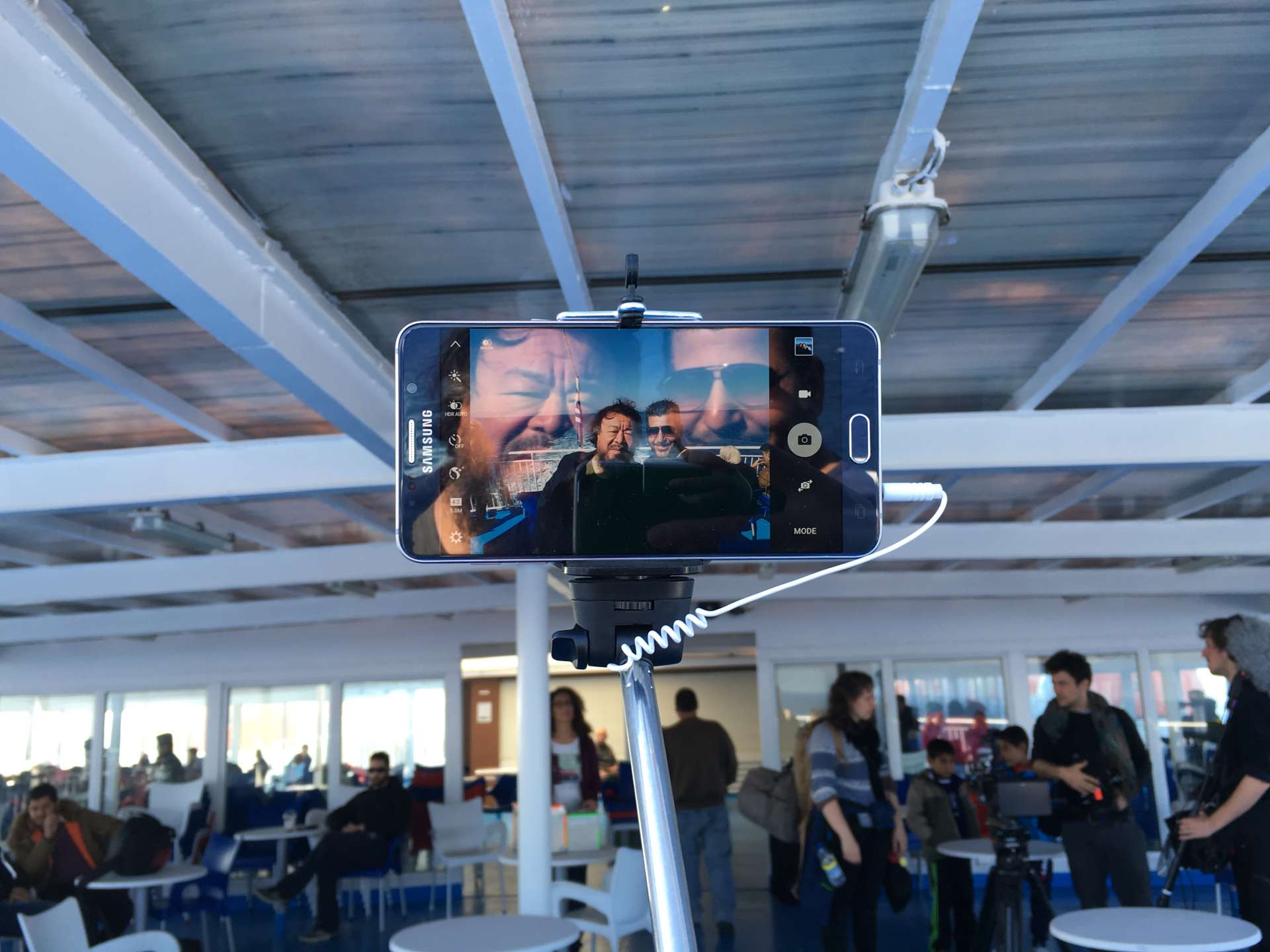

A selfie with the photographer reminds us: maybe they are just taking photos and sending them to friends, normalizing the experience of leaving one world for another. Is there a strange new form of “dark tourism” with a “mobile gaze” to quote Urry and Larsen (2011) into the phone screen on these Mediterranean ferries? We, as the audience gazing at these photos, feel we might be engaging in a kind of tourism of the refugee ship, a dark tourism of disaster in a place that is otherwise used for leisure and pleasure. The ship combined with the phone-camera affords a mobile gaze that has far more ease of movement than the people pictured.
Even if refugees remain outside the walls of Europe, they claim entry into global culture. In one video we see a screen saver with Britney Spears, a sim card, a conversation across linguistic and global divides. The mobile phone is a meeting point of cross-cultural contact: connections but also disjunctures. Songs, voices, music carry across the lines, transmitting feeling and affect that can be understood across cultures, but does Britney Spears mean the same thing everywhere?
Mimi Sheller
The cellphone screen as a mirror can be considered in the tradition masterpieces like Jan van Eyck’s Arnolfini Portrait (1434), Parmigianino’s Self-portrait in a convex mirror (1524) and Diego Velásquez’ Las Meninas (1656), crossing the long history of self-portraits (the “from Rembrandt to selfie” exhibition at the Lyon Museum of Fine Art (2016) and Self timer (2015) at the Salzburg Museum der Moderne both recently explored the theme of self-portraits). The artist uses his own image to break with and question the current reality, standing alternately on a boat and in front of a mirror, where the viewer would be. In the short video, the cellphone wallpaper simply mirrors of one of the omnipresent, ubiquitous (as media creates ubiquity), global images that shape identities, aspirations and representations: mental and cultural ubiquity on the screen of a cellphone.
Guillaume Logé
The smartphone as a lifeline
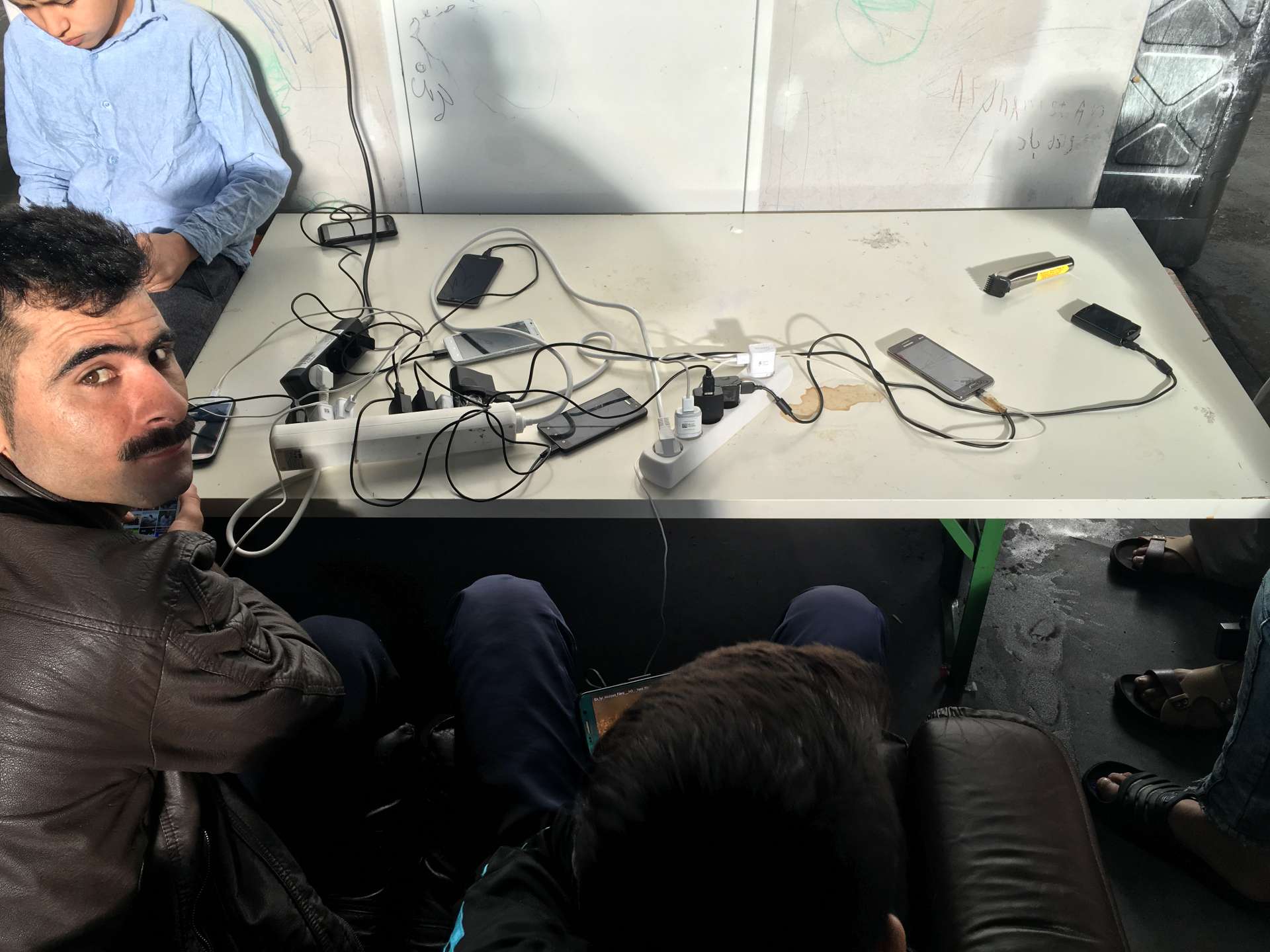
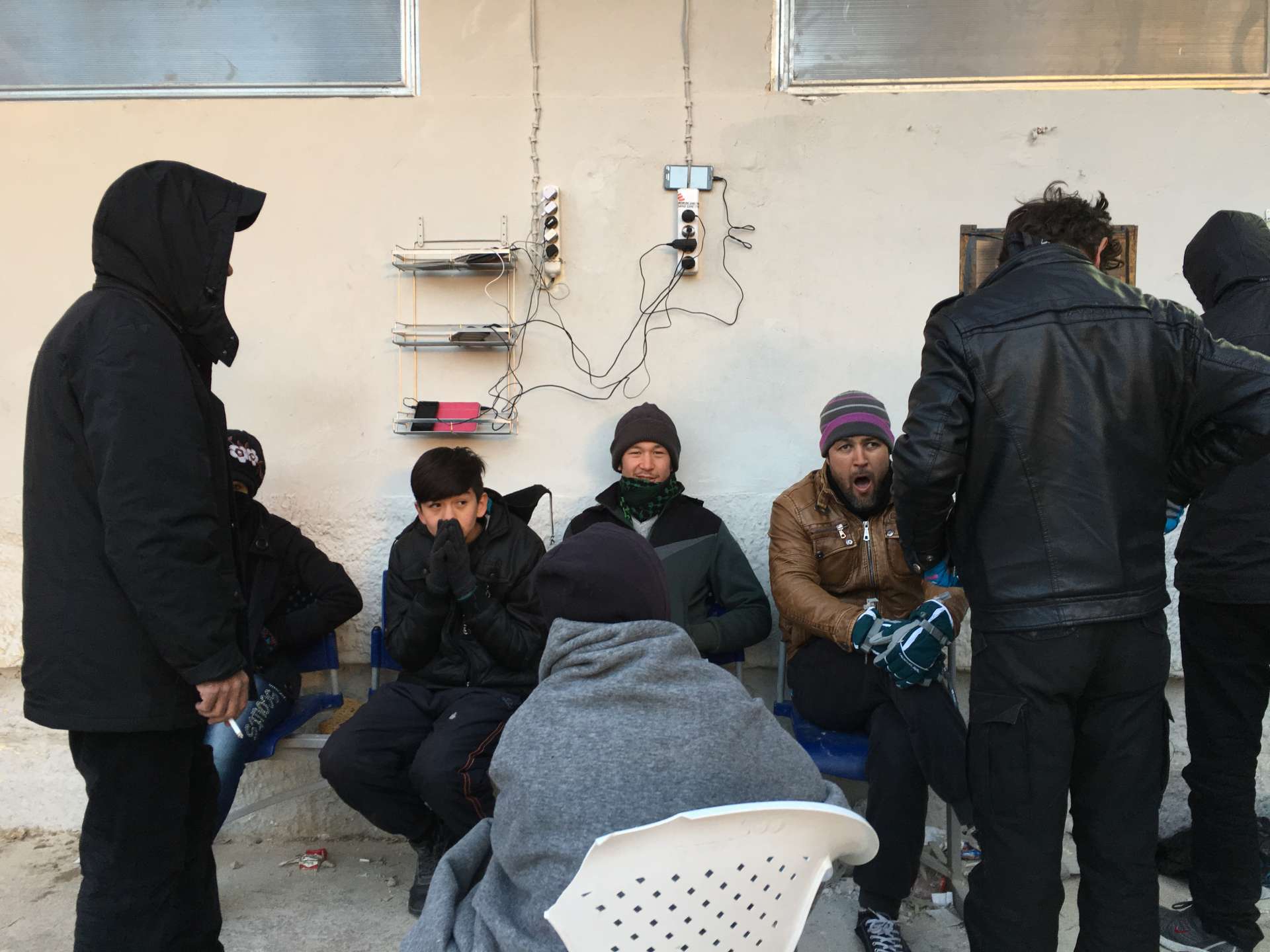
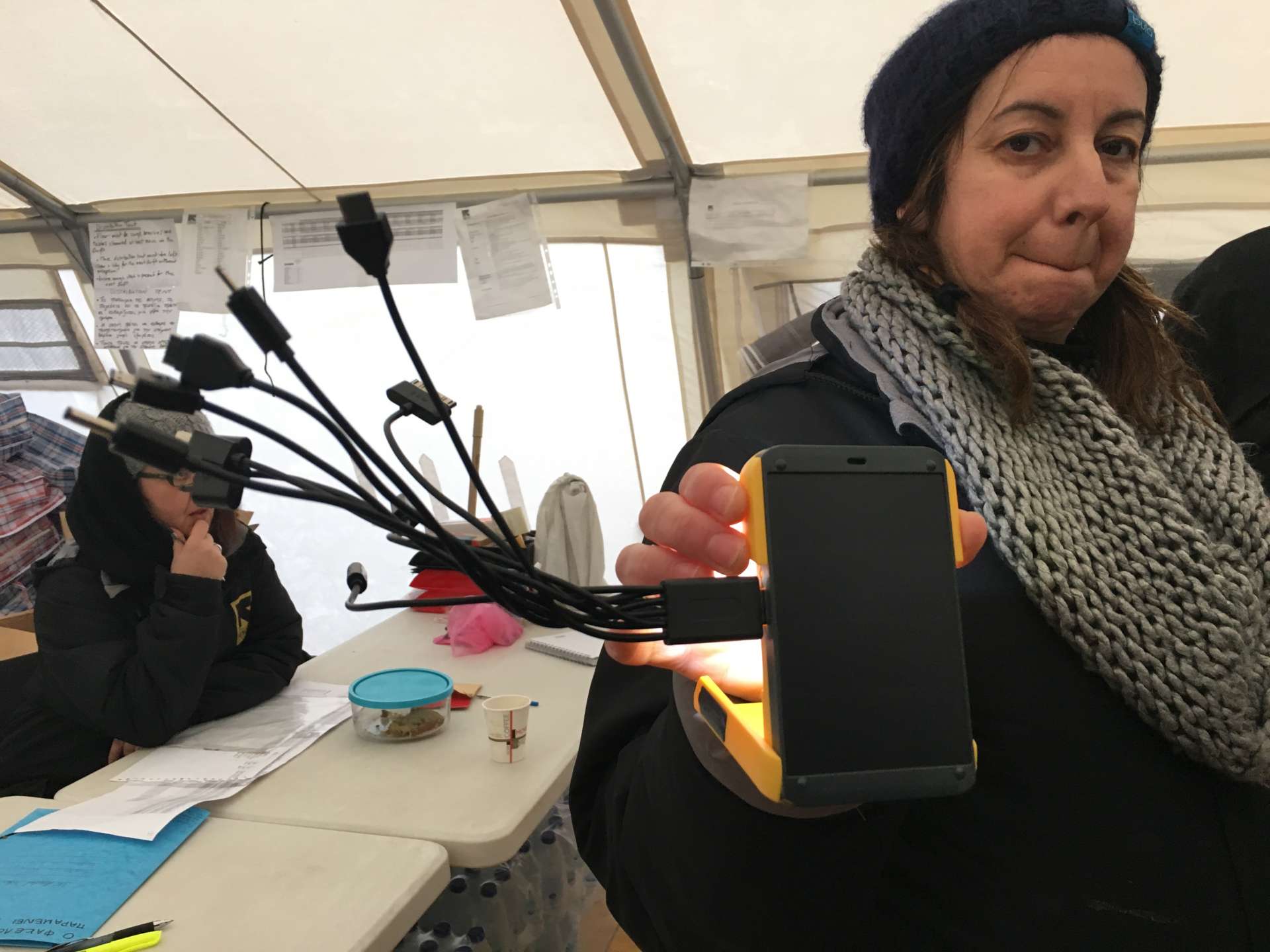
Three men huddle in the morning sun on a Greek street, travelers passing behind them. Conversing in Arabic, they gather three mobile phones and some cards, sharing numbers, and try to place a phone call. It does not go through. Then they part, a missed connection. Ai Weiwei’s images remind us of ourselves not only as travelers but also as what Sarah Pink and Larissa Hjorth (2014) call “digital wayfarers”: we engage in both digital co-presence and physical movement that interweaves local and global, online and offline, immediate and distant environments. But for refugees the gap is more extreme, the dangers of social disconnection more acute.
On the ferries people stretch their cords high to the sockets above their heads – as if reaching toward the “Hertzian space” of cell towers and satellites. Men assemble around chargers in another photo, every space taken by a phone. People stand, perch, and sit on plastic chairs in temporary formations. The phones must be kept going, charged, working, if human lives are to be maintained. From mundane everyday object the iPhones and Samsungs suggestively emerge as lifeline, ticket, identification, meeting point, fetish object, gift exchange.
Mimi Sheller
The "smooth space” concept, as defined by philosophers Gilles Deleuze and Félix Guattari, is a space of nomadism (A Thousand Plateaus: Capitalism and Schizophrenia, 1980) that contrasts with the striated space of regulations and states. The desert embodies the idea of smooth space: in the desert, one can draw lines wherever one wishes, as in the ancient times: with freedom and individuality. Are modern means of communications drawing nomadic lines in the desert of the global Hertzian reality, while here on Earth we must comply with the borders of striated legal and geopolitical spaces?
Guillaume Logé
Ubiquity, intimacy from far
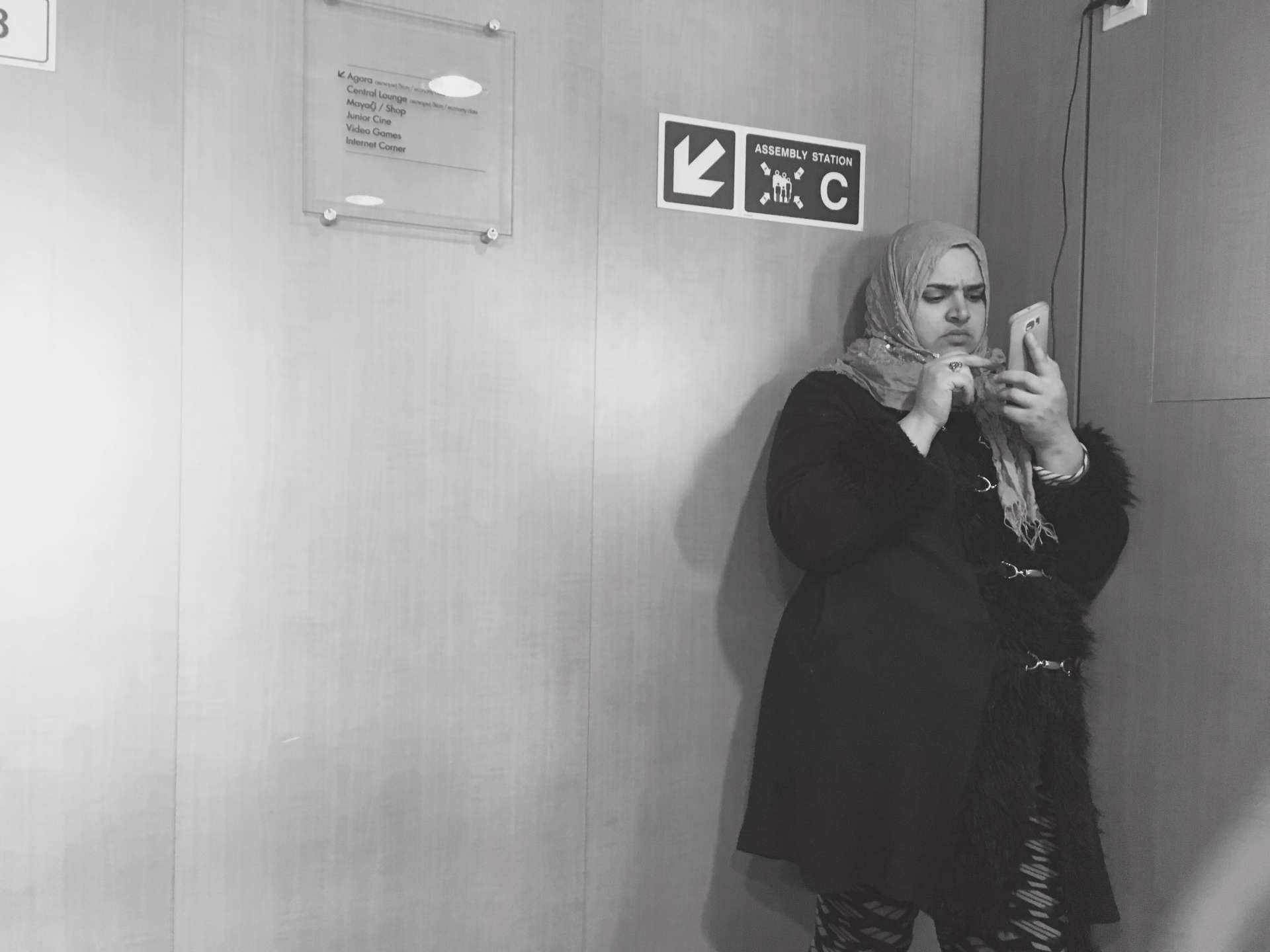
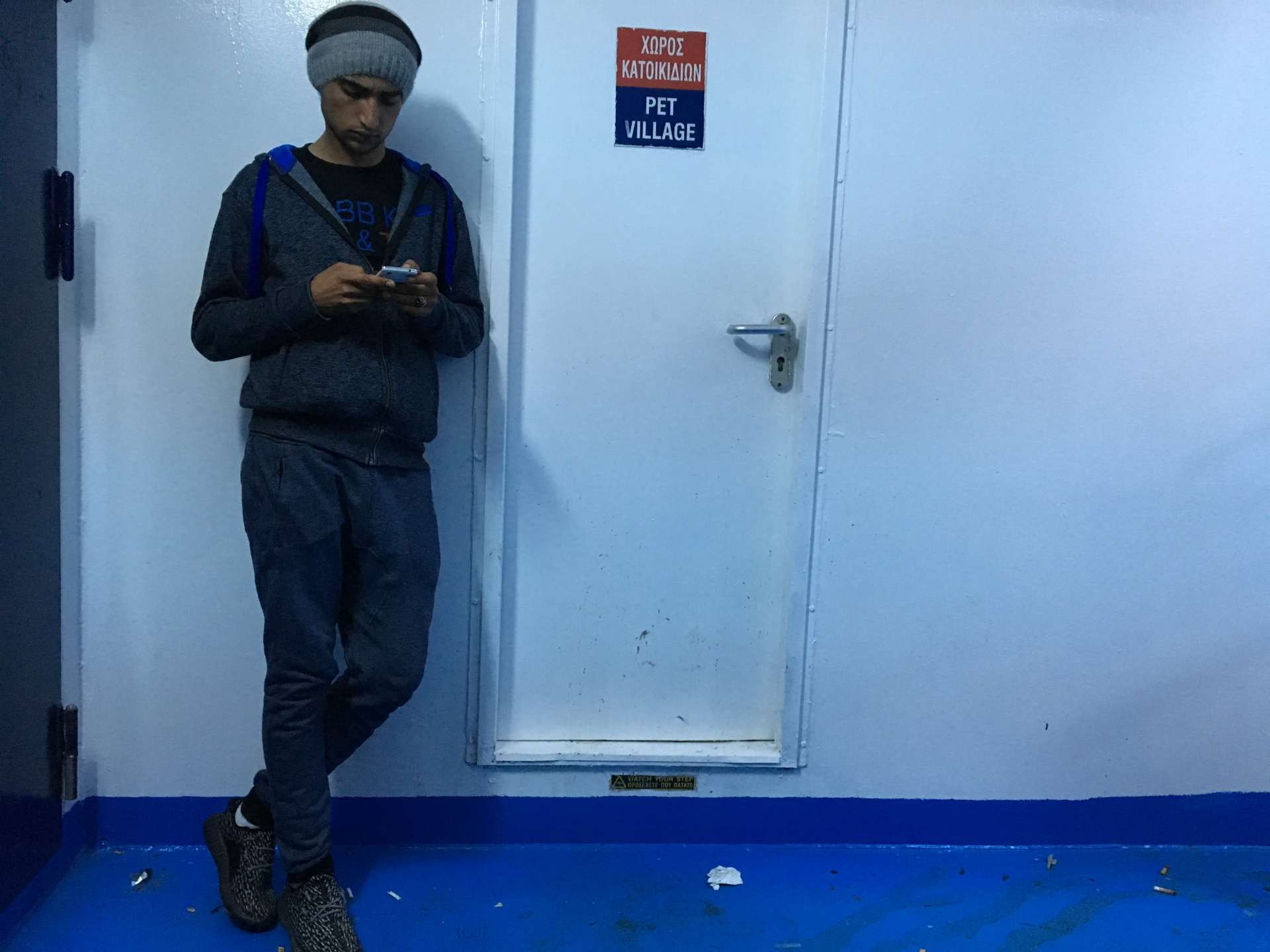


A woman stands under a sign that says “Assembly Station C”, and to the left a smaller sign points toward the Agora – the original assembly point of Greek democracy – and the “Internet Corner” – the new assembly point of mobile modernity. How, where, when and whom do we assemble through our phones? What topographies of electronic space are people on the move traversing? Are they speaking with family at home to tell them they are safe, or to those at a hoped for destination? Are they arranging for money to be sent to human smugglers, or sending text messages, or reading the news?
Refugees moving across European borders find their movement constantly hindered and slowed, one place is disconnected from another, yet they remain highly connected through their mobile communication devices in a way that refugees in the past never could. Smartphones are so much more common now, even if shared amongst many people, and there are many ways to work at maintaining connections across distant spaces. Whereas once refugees would have felt very much alone, now they might engage in forms of what John Urry called imaginative travel, virtual travel, and communicative travel, as they physically traverse space and cross borders.
Mimi Sheller
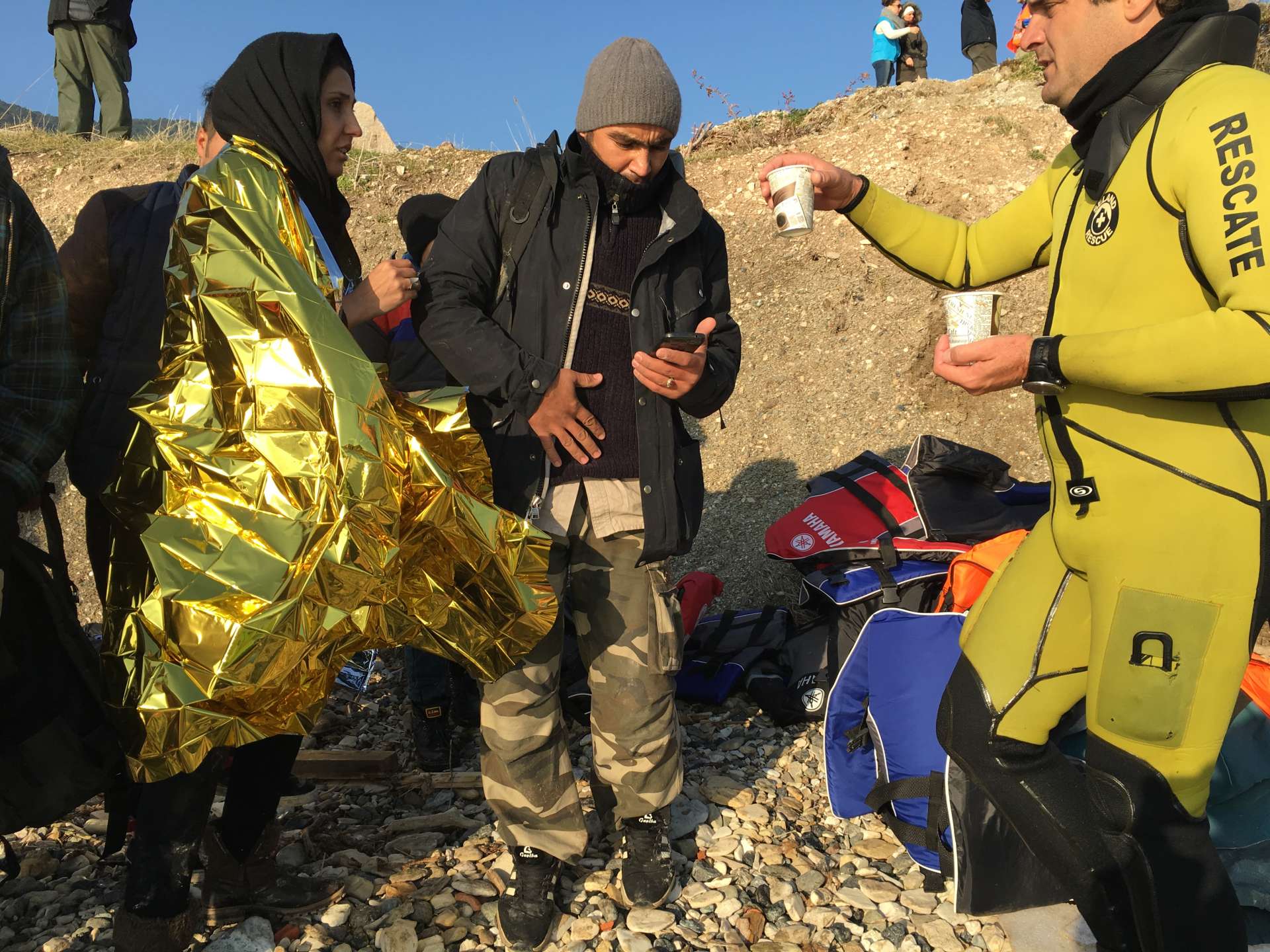

Much of the social science writing on the global refugee crisis tends to emphasize the most desperate situations (such as the deaths at sea), the most vulnerable populations (such as children), and the most dramatic points of conflict (such as “The Jungle” at Calais). Ai Weiwei’s images show a more day-to-day picture of this mass movement of tens of thousands of people across the Mediterranean and into Europe. Low on drama, he shows the individuals caught up in the situation and personalizes this experience of immobile mobility or mobile immobility. In another video a young man in a UNHCR jacket describes helping get a portion of food for an Iranian man who was leaving to get a bus to Mytilene to take the boat to Athens. The man thanks him so much and he observes: “With small actions like this you can make their life easier and you can help them. And that’s nice. That’s the way you can show love to them.”
They remind us how we must maintain “connected mobility in a disconnected world,” though subtly hinting at its dependence on aerial power (Sheller 2016). Those connections are ironically based on the military origins of the satellites that support communication, the very same ones that enable warfare, GPS targeting, drone attacks. The humanitarian systems meant to protect those fleeing war has broken down. Yet today human violence and refugee flight is mediated by mobile phones, text messages, photos, and electronic connectivity.
Mimi Sheller
“Humanity within inhumanity”
A simple image of a sunny ferry deck, a man talking on his phone. Whether on a shore, on a ferry deck, or sitting at a table, mobility is supported by mobile communication. People find ways to talk. Unlike media images that depict refugees as victims, these images of people talking remind us of what anyone might do in this situation, and how technology has changed the script of emergency flight.
A woman speaks into her phone framed by a golden sunset but stands with seaweed engulfing her ankles, a deflated boat and flotation rings behind her; a young man on the same shore smiles into his red phone with seeming relief. The people-on-phones in these photos encapsulate order in a world of disorder, stabilization in the midst of flexible arrangements, and above all humanity in the midst of inhumanity.
Mimi Sheller
10/04/2016 - Idomeni Camp, Greece
Refugees documenting with their smartphones during the clashes between the Macedonian Police and the refugees attempting to cross the Greece-Macedonia border.
13/04/2016 - Idomeni Camp, Greece
A man taking a selfie with the Greek Riot Police in front of the Greece-Macedonia border.
10/04/2016 - Idomeni Camp, Greece
A man communicating on his smartphone during the clashes between the Macedonian Police and the refugees attempting to cross the Greece-Macedonia border.
Despite the humanity of these photos and videos, a set of images from the border remind us of the violence behind this vast movement of people across the frontiers of Europe. Helicopters descend, masked people confront armed border guards, crowds run and disperse. After the waiting of the camps and the ferries, the border itself is a place of violent commotion. Crossing may not be possible. People may be sent back. This is the condition underlying their efforts at movement: the ever present risk of being stopped.
Mimi Sheller
17/03/2016 - Idomeni Camp, Greece
Refugees gathering around a table, charging their smartphones inside the coffee shop in Idomeni Camp.
23/03/2016 - Idomeni Camp, Greece
Abood Okaab, a young man from Syria, showing a diagram depicting his trip from Syria to Idomeni, which he designed on his smartphone.
03/04/2016 - Idomeni Camp, Greece
A man from Syria, tuning his electronic guitar with an application on his smartphone.
17/03/2016 - Idomeni Camp, Greece
A man sending voice messages, concerned about the health conditions at Idomeni camp.
Music is the original mobile media : it crosses borders, mixes languages, and brings people together. Whether tuning a guitar or sharing a global pop icon, music brings us together. And mobile phones have become the most important device for sharing music digitally, with millions of downloads sending music out on the airwaves. In the midst of the migration exodus, what could be better than music as a way to reconnect and rebuild belonging in a distant place? It allows us to re-enchant the world with meaning and emotion in motion.
Mimi Sheller
Facing the urgency of the present
23/05/2016 - Idomeni Camp, Greece
Refugees using their smartphones at a wi-fi hotspot in Idomeni Camp.
17/03/2016 - Idomeni Camp, Greece
A man reading his text message out loud, asking how he is doing at Idomeni Camp.
27/03/2016 - Idomeni Camp, Greece
A charging station for smartphones using an electricity generator from an ice cream truck.
People now gather around a digital hearth – whether a wifi signal or a board set up for charging multiple phones at once. Given the importance of communication and staying connected while making the long journey toward refuge, we need new kinds of gathering places.
This opens up the question for all of us: What kind of work are we doing? What are the demands of our times and how can we address them? There is a kind of urgency of now that each generation must face. As Ursula Biemann also explores in her project Sahara Chronicles, “the trajectories of artists, journalists, NGO workers, tourists and social scientists on their field trips interweave with these other forms of mobility of people on their quest for a better life. Together with migrants we constitute this intense space of mobility” (Biemann 2016, n.p.). How can we imagine interactions across spaces of mobility and mobile communication, as well as photography, art installation, and social science, as sites of action in which new kinds of public discourse might emerge, and perhaps influence public policy?
Mimi Sheller